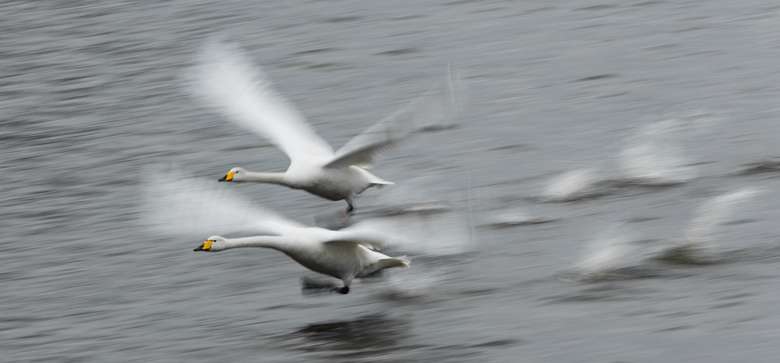Engineers find secret to steady drone cameras in swan necks

Swans and geese are the envy of aeronautical engineers. Even plump geese can perform remarkable aerial acrobatics – twisting their body and flapping their powerful wings while keeping their head completely still.
Now, Stanford engineers have used high-speed video footage and computer models to reveal that whooper swans stabilize their head with a complex neck that's tuned like a car suspension. The study, published in Journal of the Royal Society Interface, has influenced the researchers' design of a camera suspension system that could allow drones to record steadier video.
All birds have built-in vision stabilization to compensate for the up and down body motion caused by flapping their wings in flight. Scientists have studied the neck morphology and head motions of walking or stationary birds, but measuring the mechanism in flight has not been successful until now.
David Lentink, an assistant professor of mechanical engineering at Stanford, and his colleagues devised a method for comparing high-speed video data of a whooper swan flying over a lake with a computer model that approximated the springy damping effects of the bird's neck that allow it to stabilize the vertical disturbances.
They found that the neck functions much like how a car's suspension system provides a smooth ride over a bumpy road. The neck vertebrae and muscles respond with just the right stiffness and flexibility to passively keep the head steady during flapping flight, and even in mild gusts.
"This simple mechanism is a remarkable finding considering the daunting complexity of avian neck morphology with about 20 vertebrae and more than 200 muscles on each side," said Lentink, the senior author on the study.
Lentink credits much of the work to a former master's student, Ashley Pete, who graduated this past spring and is first author on the study. She developed the idea and methodology for the study in Lentink's class, ME 303: Biomechanics of Flight.
"The paper she wrote for this class was so good that we expanded it together and submitted it to Interface, where it got published," Lentink said. "This really shows students can make remarkable discoveries in the classroom, going beyond textbooks, based on their creativity and enthusiasm."
The focus of Lentink's lab group spans biology and engineering, with goals of improving drone design and performance by understanding and adopting key characteristics from flying birds. The current work has provided guidelines for a prototype swan-inspired passive camera suspension system, developed by Marina Dimitrov, one of Lentink's undergraduate students, that could allow drones with flapping wings to record better video.
More information: "The role of passive avian head stabilization in flapping flight." J. R. Soc. Interface 2015 12 20150508; DOI: 10.1098/rsif.2015.0508. Published 26 August 2015
Journal information: Journal of the Royal Society Interface
Provided by Stanford University





















